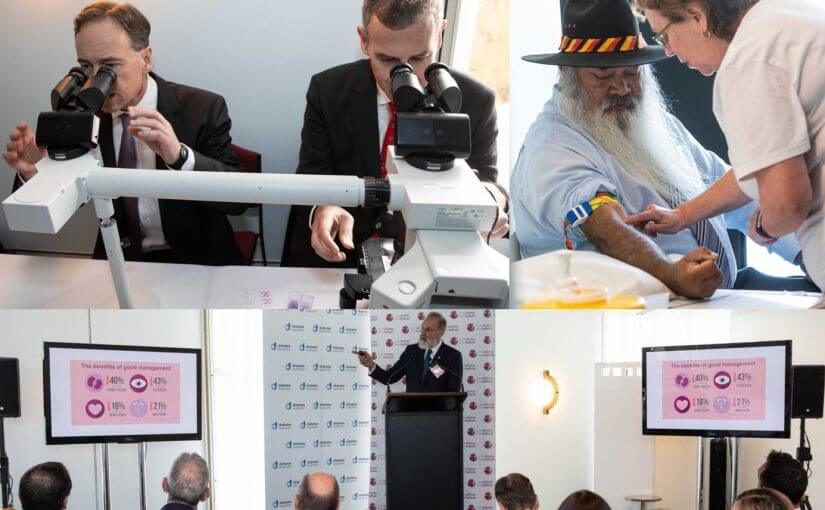Usually when politicians roll up their sleeves in Canberra it involves some form of parliamentary fisticuffs, but recently Parliament House saw pollies rolling up their sleeves to have their blood tested for diabetes.
On 27 June, Diabetes Australia (DA) and Pathology Awareness Australia (PAA) organised a detecting diabetes event with the Parliamentary Friends of Diabetes to highlight the significant and looming health issue that is diabetes in Australia.
Currently there are 1.2 million Australians with diabetes, and an estimated 500,000 more living with silent, undiagnosed type 2 diabetes. Many people will live with diabetes for up to 7 years before diagnosis, but a delay in diagnosis can result in eye damage, kidney damage or cardiovascular problems.
As those attending the event discovered, while the looming epidemic of diabetes is cause for concern and action, the good news is that the HbA1c blood test allows health professionals to significantly reduce both the health and economic costs of type 2 diabetes.
A reduction of just 1% in HbA1c (glycated haemoglobin) levels reduces a person’s risk of kidney disease by 40%, eye disease by 43%, amputation by 21% and heart attack by 16%.[1]
Treating diabetes before complications costs an average of $4,025 per patient, while treatment for those with micro and macrovascular complications costs an average of $9,645 per patient.
But diabetes isn’t just about facts and figures. Jaybee Serrano, who flew from Sydney to Canberra for the parliamentary event on his 34th birthday, is living proof of the value of the HbA1c test.
In early 2017, Jaybee visited Blacktown Hospital’s Emergency Department complaining of a stiff neck and received a HbA1c test. The results indicated Jaybee had pre-diabetes HbA1c levels, a shock for someone so young. After consultation with his GP, Jaybee managed to reverse its effects and now acts as a diabetes educator at Blacktown Mt Druitt Hospital.
But what was perhaps most alarming about the HbA1c testing conducted by Blacktown Mt Druitt Hospital was that Jaybee represented only the tip of the iceberg.
A trial program to test for diabetes began at Blacktown Mt Druitt Hospital in New South Wales in mid-2016. Anyone over the age of 18 presenting to the Emergency Department for other blood tests was also given an HbA1c test. The results were striking.
Between mid-2016 to January 2018, Blacktown Hospital tested 48,000 people and revealed that an astonishing 47% of those tested presented with pre-diabetes or diabetes. What was a trial has now become a permanent program at the hospital.
Speaking at the parliamentary event, Professor Greg Johnson of DA said:
“Type 2 diabetes costs Australia $4-$6 billion annually, but treatment costs can be halved if complications are avoided through early detection and management.”
Echoing those sentiments was the Federal Health Minister, Greg Hunt MP who praised the work being done by Diabetes Australia and the pathology sector to encourage early detection and enable preventative action.
Hosting the event with Graham Perrett MP was Rowan Ramsey MP, whose seat of Grey has the highest rate of diabetes in Australia.
Mr Perrett said; “Thank you to the 1700 pathologists and 35,000 scientists and laboratory staff, the quality of our pathology services in Australia really is fantastic.”
The Chair of Pathology Awareness Australia, John Crothers, says the effectiveness of diabetes testing is clear:
“There is nothing but upside to early detection of diabetes through pathology testing. With early detection, diabetes is at its most treatable as well as being at its most affordable from a health policy perspective.
“Seventy percent of medical decisions rely on pathology testing. It is at the front-line of prevention, detection and management of disease.”
[1] The economic value of pathology: achieving better health, and a better use of health resources (2018), The Centre for International Economics, p. 3

